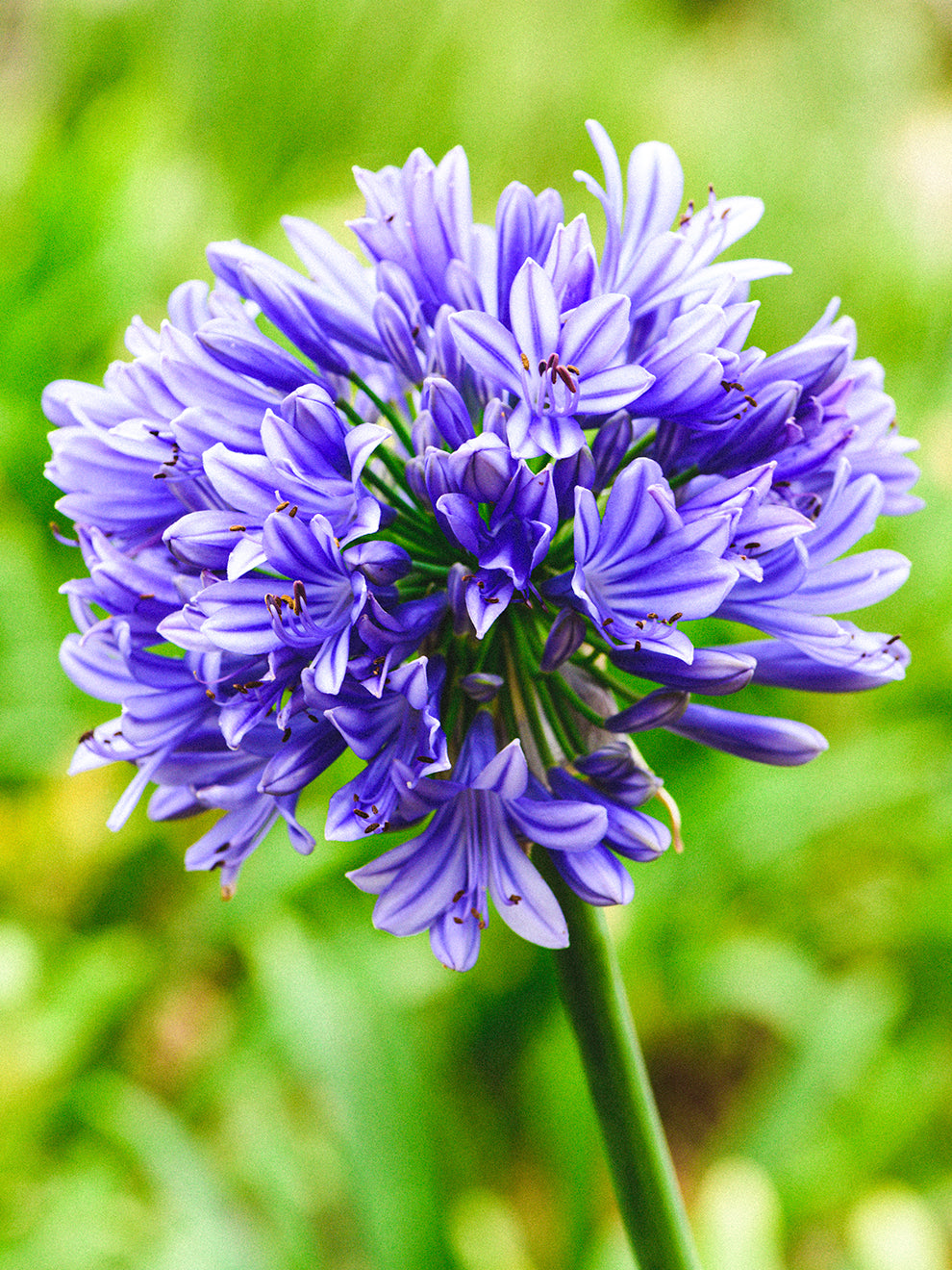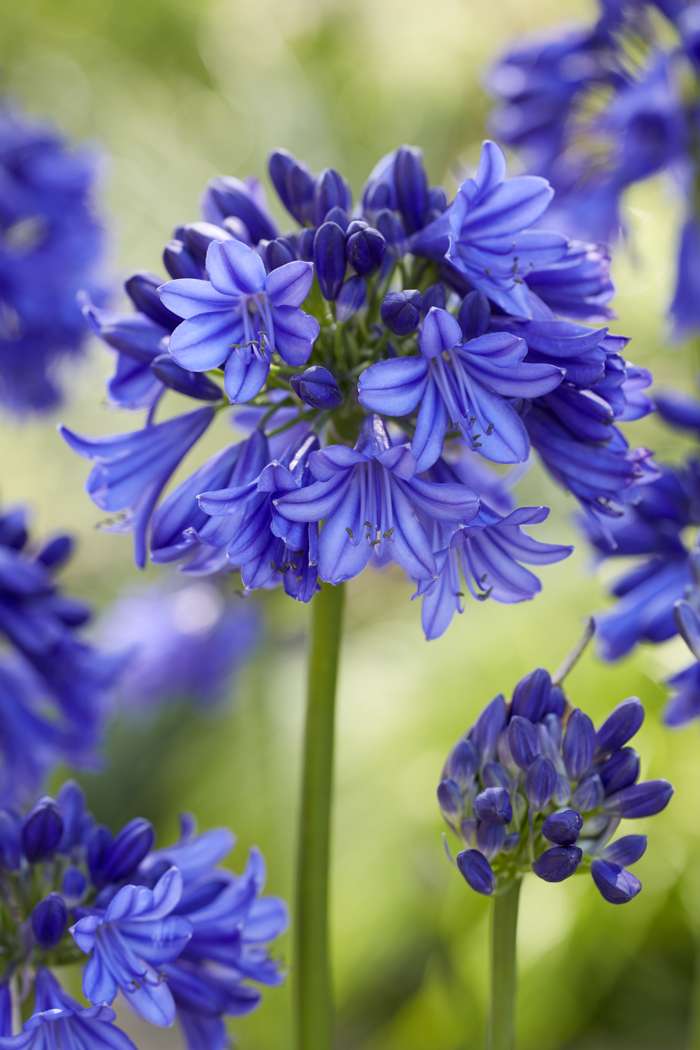Agapanthus Varieties: Picking the Best for Your Landscape
Agapanthus Varieties: Picking the Best for Your Landscape
Blog Article
Letting Loose the Secret to Effective Agapanthus Farming: Tips and Tricks for a Flourishing Garden
In the realm of horticulture, cultivating agapanthus effectively calls for a strategic approach that encompasses various facets of plant treatment. With cautious attention to information, one can open the secrets to supporting these sensational blossoms, bring about a yard that thrives with charm and vibrancy. By comprehending the nuances of agapanthus cultivation, one can produce a setting where these plants thrive and bloom abundantly. In the following discussion, we will explore crucial ideas and methods that will certainly direct you towards a growing agapanthus garden, providing understandings into best practices, dirt problems, watering methods, and a lot more.
Growing Agapanthus: Best Practices
When growing Agapanthus, proper soil prep work is crucial for ensuring effective development and development of these attractive blossoms. Agapanthus, typically called Lily of the Nile or African lily, thrives in well-draining soil with a slightly acidic to neutral pH degree - Agapanthus. Before growing, it is vital to amend hefty clay dirts with raw material such as garden compost or peat moss to boost drainage and provide vital nutrients for the plants
To plant Agapanthus, pick a location that gets full sunlight to partial color, as this will certainly advertise healthy development and abundant flowering. Dig an opening twice the size of the plant's origin ball and put the Agapanthus at the same depth it was formerly growing. Gently backfill the opening with soil, pressing down strongly to remove any type of air pockets around the origins.
Water the newly planted Agapanthus completely and proceed to keep the dirt equally moist, particularly throughout the plant's energetic expanding season. Agapanthus. Applying a balanced fertilizer once a month can even more support the plant's growth and blooming. By adhering to these best techniques for planting Agapanthus, you can create a sensational screen of these exciting flowers in your garden
Perfect Soil Conditions for Agapanthus
For ideal development and growing success of Agapanthus plants, guaranteeing the soil conditions are optimal is crucial. Agapanthus flourishes in well-draining soil with a slightly acidic to neutral pH level ranging from 6.0 to 7.0. This kind of dirt allows for adequate water drainage, preventing waterlogging which can lead to root rot. To enhance soil drain, think about adding raw material such as compost or peat moss when preparing the planting website. Moreover, Agapanthus likes soil that is abundant in nutrients, so including a well balanced plant food throughout the growing period can advertise healthy growth and vivid flowers.

Watering and Fertilizing Tips
To guarantee healthy and balanced growth and vivid blossoms, appropriate watering and fertilizing methods are necessary for effective Agapanthus growing. Agapanthus plants gain from normal watering, especially during the growing season. It is recommended to water deeply as soon as a week, guaranteeing the dirt is damp however not waterlogged. Throughout heat or in pots, even more constant watering may be required to protect against the soil from drying totally.
When it involves fertilizing Agapanthus, a well balanced plant food with equal components nitrogen, phosphorus, and potassium can be used in the spring to promote healthy and balanced growth and blooming. Slow-release plant foods are ideal for providing nutrients progressively over a prolonged period. Avoid over-fertilizing, as this can bring about too much vegetation growth at the expenditure of flowers.
Additionally, including natural issue like compost into the soil can boost nutrient levels and enhance soil framework, helping in the overall health of the Agapanthus plants. By following these watering and feeding suggestions, garden enthusiasts can guarantee their Agapanthus plants prosper and create sensational display screens of flowers.
Pruning and Deadheading Strategies
Appropriate trimming and deadheading techniques play a critical duty in keeping the wellness and aesthetic appeals of Agapanthus plants, enhancing the vital practices of watering and feeding for effective cultivation. Trimming Agapanthus involves getting rid of invested flower heads, dead or yellowing leaves, and total shaping of the plant to promote better growth. Deadheading, the procedure of eliminating discolored blossoms, not just boosts the plant's appearance however additionally encourages further blooming.
When deadheading Agapanthus, it is suggested to snip off the flower stem at the base making use of sharp, tidy shears. This process redirects the plant's energy from seed manufacturing back right into origin and foliage growth, promoting a healthier and much more robust plant. Routine deadheading can prolong the growing duration of Agapanthus and protect against self-seeding, which can result in overcrowding.
In terms of pruning, Agapanthus usually take advantage of a light trim after blossoming to clean up the plant and urge fresh development. Cutting down the invested blossom stems and eliminating any kind of dead or damaged helpful resources foliage aids preserve the plant's vigor and overall look. Nevertheless, it is important to stay clear of reducing right into the crown of the YOURURL.com plant, as this can deteriorate its wellness.

Protecting Agapanthus From Pests and Diseases
Executing effective parasite and illness administration methods is essential to safeguarding the health and wellness and vigor of Agapanthus plants in growing. Agapanthus are normally sturdy plants, however they can still fall target to numerous pests and illness if not properly taken care of. One common parasite that impacts Agapanthus is the Agapanthus borer, a caterpillar that passages into the plant, triggering damages to the flowers and leaves. To stop infestations, normal evaluation of the plants is essential. If borers are discovered, they can be by hand eliminated, or insecticidal soap can be used as a control step.
In enhancement to bugs, Agapanthus are vulnerable to diseases such as origin rot and fungal fallen leave areas. By remaining watchful and dealing with insect and disease concerns promptly, garden enthusiasts can aid their Agapanthus grow and prosper.

Verdict
In final thought, successful growing of agapanthus calls for appropriate growing techniques, ideal dirt conditions, ample watering and feeding, regular trimming and deadheading, and protection from illness and bugs. By complying with these tricks and suggestions, garden enthusiasts can ensure a growing yard loaded with lovely agapanthus blooms. Agapanthus. Keep in mind to look at this now maintain consistent care and focus to detail to advertise the health and durability of these sensational plants
When growing Agapanthus, proper dirt preparation is necessary for ensuring successful growth and development of these lovely blossoms.Water the recently grown Agapanthus thoroughly and continue to keep the dirt evenly damp, particularly throughout the plant's energetic expanding period.For optimum growth and flowering success of Agapanthus plants, making sure the soil problems are suitable is crucial. When planting or transplanting Agapanthus, make certain the soil is well-prepared to provide the required structure for the plants to develop themselves efficiently. One typical bug that affects Agapanthus is the Agapanthus borer, a caterpillar that tunnels into the plant, creating damages to the fallen leaves and flowers.
Report this page